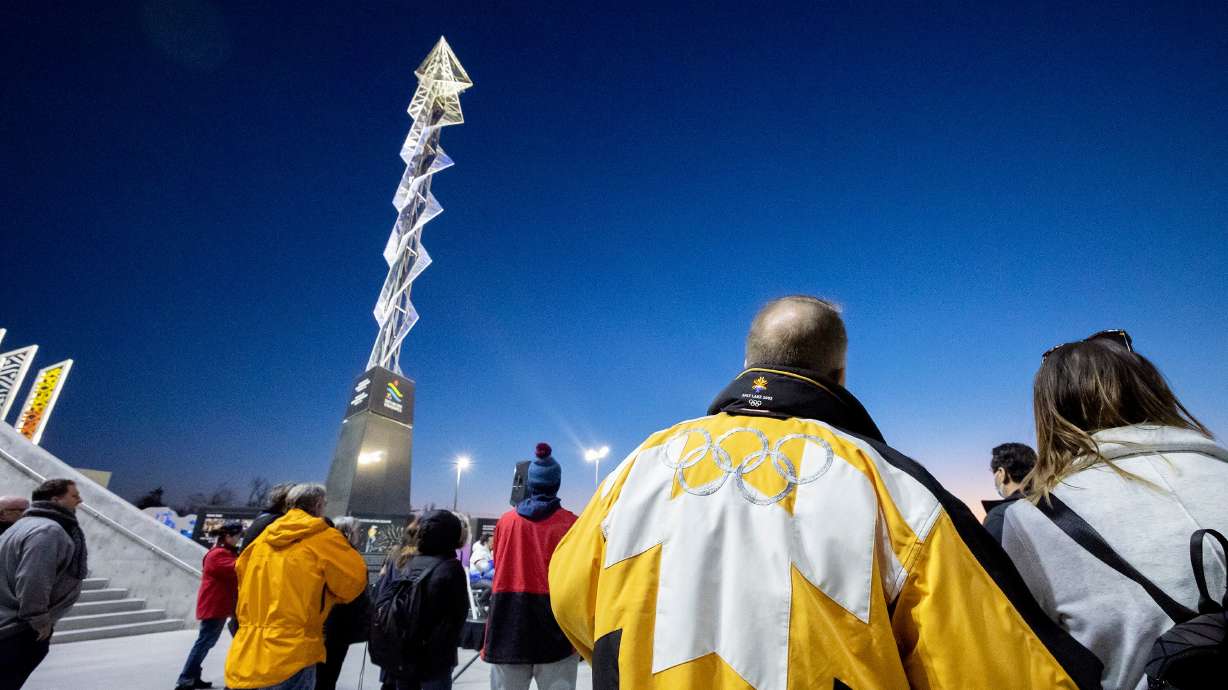Estimated read time: 5-6 minutes
- Utah's 2034 Winter Games aim to boost sustainability, focusing on air quality.
- Olympic organizers promise a positive climate impact, reusing 2002 venues to reduce emissions.
- Ski resorts are forced to adapt to climate change, with shorter winters affecting snow conditions.
SALT LAKE CITY — Utah's 2034 Winter Games can be a big boost to efforts to bolster the state's sustainability, according to participants in a Hinckley Institute of Politics discussion on climate resilience and the Olympics.
"If we have a nine-year timeline to implement these strategies and to make the air quality better because the whole world is watching, that's a great excuse to start to get things into motion," Martha Howe, Ski Utah's content and sustainability manager, said.
And she doesn't want to see whatever's done to meet the promise made by Utah's Olympic organizers to host a Winter Games that leave a positive climate impact end with the Closing Ceremonies.
"My goal and my hope is that everything that is going to be implemented to making the Games as green as possible will just continue on," Howe told an audience that gathered Wednesday for the hourlong panel discussion.
What Utah's Olympic bidders said about sustainability
In last year's bid submission to the International Olympic Committee, another Winter Games was described as a way to assist "already rapidly expanding efforts to improve air quality and to protect the Great Salt Lake," helping to "ensure the long-term viability of winter sport in Utah."
What that looks like remains to be seen, said another panelist, Celia Peterson, Park City's environmental sustainability project manager. Peterson wrote the sustainability piece of Utah's Olympic bid.
"In terms of the concrete plan, that hasn't been put together yet. We made the promise and put a few things out there," she said of the pledge that the 2034 Olympics "would draw more carbon out of the atmosphere than the Games are emitting."
Her work for the bid included going through "a pretty extensive exercise of what the emissions of the Games would look like and strategies on how to reduce emissions coming from venues, around transportation, and then especially around the legacy."
Utah's next Olympics and Paralympics that follow for athletes with disabilities are already at an advantage because venues from the 2002 Winter Games have remained up and running and will be reused. Organizers say nothing permanent needs to be built to host again.
"The fact that we don't have to build new venues was huge for the bid. That right there has a huge positive climate impact," Peterson said, crediting the state's winter sports legacy from 2002's "awesome Games."
The IOC places a premium on sustainability in choosing Olympic hosts, but she said Utahns want that, too.
"I did a lot of stakeholder engagement," Peterson said of her work for the bid. The two biggest issues raised in those discussions, she said, were air quality and the ecological health of the Great Salt Lake.
"It's in the interest of Games as part of the promise that the Games will be helping to preserve both of those," Peterson said, adding that among the ways that can be accomplished is through a "holistic" approach that includes reducing waste.
Climate change and snow conditions
Panelist Jared Schumate, a U. student and Nordic combined skier who competed in the 2022 Winter Games in Beijing that relied on manmade snow, has used satellite imagery to study changes to the snowpack on Utah's Olympic venues over the years.
"The gist of the research was that we're doing pretty fine. But the satellite imagery can't distinguish between manmade and natural snow, so that definitely skewed the results to make it look a lot better than it is," he said.
At venues located at higher elevations, including Deer Valley or Snowbasin, "snowpack-wise, for most of the winter, they're doing OK," Schumate said. That's not the case for the Soldier Hollow Nordic Center, located in Wasatch Mountain State Park near Midway.
"Soldier Hollow, which is the host for cross-country, biathlon and Nordic combined, not good," he said. By March, when the Paralympics will be held, less than a quarter of the venue was covered by snow in 11 of the 23 years studied.
Making snow to supplement less than ideal conditions has its own issues for the environment in terms of the amount of water needed but also for athletes. Shumate said manmade snow, which can only be produced below certain temperatures, just feels different.
"Compared to natural snow, it like falls apart a lot quicker," he said, recalling how at his last race in 2023, he crashed several times during what was a 20-minute race thanks to the breakdown of the manmade snow.
"It just piles up," Shumate said. "I think I'm a pretty good skier, but trying to ski through 3 feet of slush on cross-country skis is not fun or easy. But I think at this point, every winter athlete is super used to manmade snow, so it's not as big as a deal as maybe it once was."
Howe said ski resorts are trying to make a difference when it comes to reducing their impact on the environment but are also businesses that have to do what they can to adapt to the changing climate.
"It's no secret that the winter seasons are getting shorter, and there's predictions online that can seem pretty scary," she said. "Right now, we're just seeing a shift in when the snow comes in. It used to be right around December and Christmas, and now it's kind of pushed to January."
Skiers want to play a part in protecting the environment, Howe said.
"They care about the outside world and want to spend time here. They're choosing to do that. They're choosing to spend their money in the mountains. So it's a great audience to talk to," she said. "We just have to create these areas where they can actually take action."










